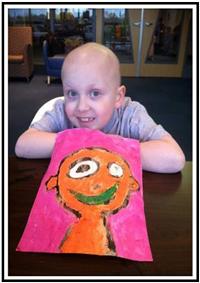ARFID: When It’s More Than Just Picky Eating
By Guest Blogger Neely Turlington
“He will eat when he gets really hungry.”
“You just aren’t providing enough variety.”
“Have you tried offering him pizza or toast? All kids like those!”
Knowing Something Wasn’t Right
Over the years these were some common, well-meaning responses to my son “E”’s eating habits. As a mom, it’s gut wrenching when solutions sound so easy, but mealtime with your child is a constant failure. From gagging to vomiting, choking to outright refusal, he had an extreme aversion to eating from infancy.
My intuition told me he needed specialized help. Over the years no therapist was able to make sustained progress with him. Food exposure therapy, psychotherapy, and occupational therapy had all ultimately failed.
But when E was 11 we met a psychiatrist who changed all our lives. She said, “It’s more than picky eating. He won’t grow out of it. In fact, he will starve if you don’t serve his kind of food.”
I know it sounds awful, but I was so relieved. Those were the words I had prayed to hear, because if his condition had a name, maybe it also had a treatment. She said he has a rare eating disorder called Avoidant Restrictive Food Intake Disorder (ARFID).
Understanding ARFID
ARFID is often described as being a form of “extreme picky eating.” Dr. Kim DiRé, LPC, MEd, SEP, DBH, a trauma and eating disorder specialist, said “ARFID is an eating disorder like no other. The fear of food and/or the consequences translates in ARFID individuals as “if I eat that, I will die.”
The fear of food creates constriction of the mouth tissues, throat and digestive tract. Therefore, developing food variety is impossible. Malnutrition from ARFID causes many medical issues, including fatigue and loss of motivation and depression.
ARFID is also a sensory disorder making the sight, smell, look and texture of food challenges to overcome. Most people with ARFID have a very limited menu of “safe foods” they will eat. These are usually comfort foods – white breads, french fries, chicken nuggets, plain noodles, and crackers. In E’s case his safe foods were mostly brown colored, bland and crunchy, with little to no nutritional value.
Children with ARFID also suffer from anxiety as a result of fear. The anxiety can become so high that they alienate and withdraw. A child with ARFID does not want to go to a birthday party and have all their friends ask them continuously, “Why won’t you eat a hamburger or pizza?” or “Just try some pasta – you’ll like it.” Older children eventually get tired of hearing all of the reasons they should eat and they shut down.
What Treatment Looks Like
Treatment for ARFID is multi-tiered based on its severity. By the time we found ARFID experts, two years after his diagnosis, E needed residential treatment to address electrolyte imbalances, malnutrition and low body weight. Taking him to a residential facility out of town was the hardest thing I had ever done. Everyday I waited at home with my husband for the daily phone call, the dreaded “when can I come home?” conversation with E and the nightly tears that always came as we wondered how this ever happened.
Treatment in his residential facility included dialectical behavioral therapy, family-based therapy with us and group therapy with other kids. After a month he stepped down to a partial hospitalization program in yet another town. The move split our family during the week, but it meant I had him every night and half the weekend. After six weeks, we came home.
It felt like bringing home a newborn all over again. Without the daily support in place, I was terrified he, and we, would fall back into old habits. Finding outpatient treatment took weeks, but he never faltered. It’s been almost three months since E’s hospitalization. Therapy in several forms continues and further progress is slow. I thank God each week that goes by without a setback.
Moving Forward
Eating disorders like ARFID affect the whole family. There is no cure, and treatment can take years or even require a lifetime of therapy.
From my experience I can tell you:
- There is hope.
- Seek parent support, even if only virtually (a local mom helped me through the darkest days.).
- Do your research because information is power.
- Never give up.
- You are not alone.
Many doctors do not have the training to identify the signs of ARFID in children. I encourage anyone who has a child with habits that seem more serious than “picky eating” to follow their instincts. If something seems off, it probably is.
Neely Turlington is a mom in Lewisville, NC who is always seeking better outcomes for her ARFID son and is an advocate for children and families who are battling the disease each day.
Want to see more blogs like this and get notifications on local events and happenings? Subscribe to our free weekly newsletters here.








Seeking help from a dietitian and therapist trained in eating disorders is also helpful for ARFID! As a pediatric dietitian, I support families whose children suffer from ARFID in the triad area. Bloompedsnutrition.com
Hello Dr Mardeusz, would you be able to answer two quick questions please? First, generally speaking: is ARFID related to autism spectrum and/or ADHD? Second, if a child is able to make an effort and succeed in breaking out from chicken-nuggets-only to veggies and other healthy options, do they therefore not have ARFID but possibly other issues? (They have a therapist but I don’t know whether they’re aware of ARFID and was wondering whether to bring it up.) TIA